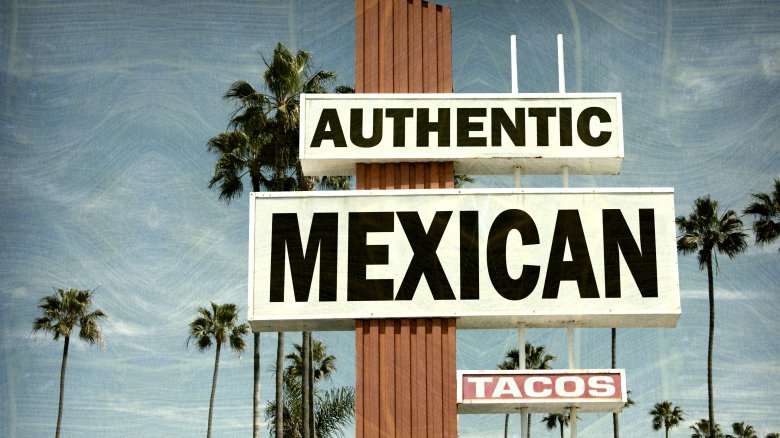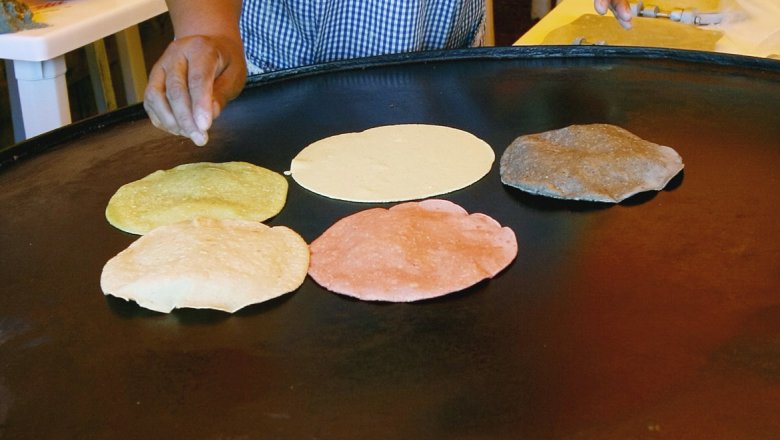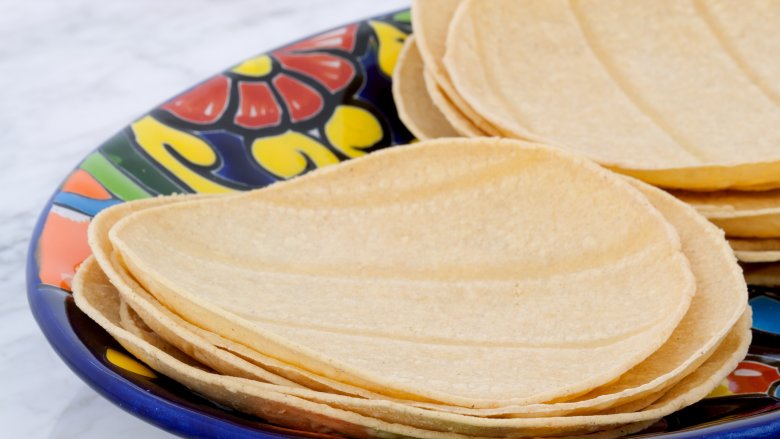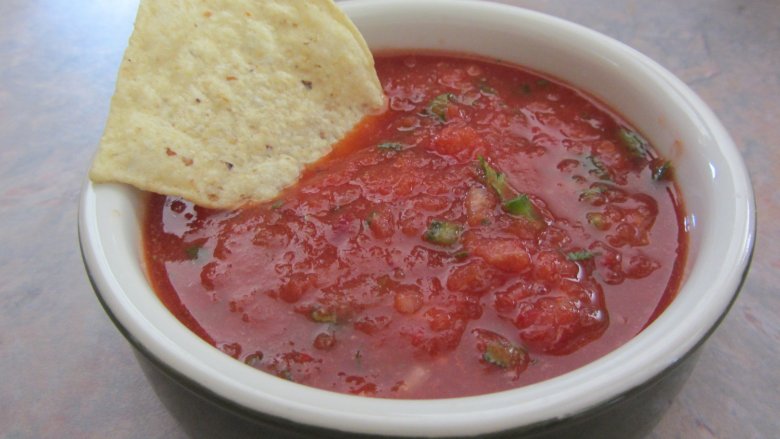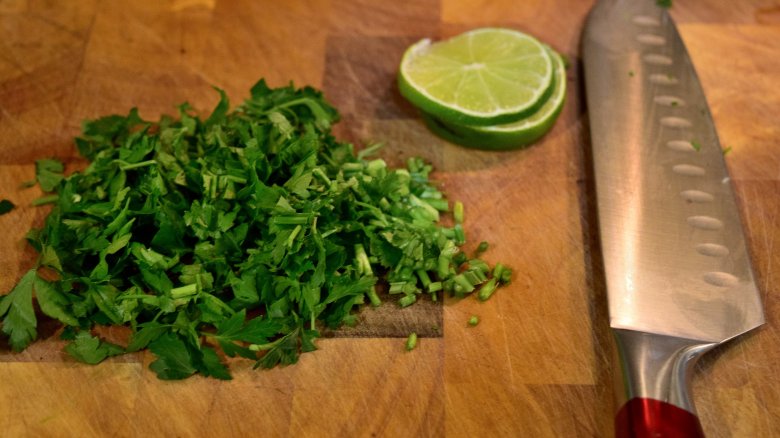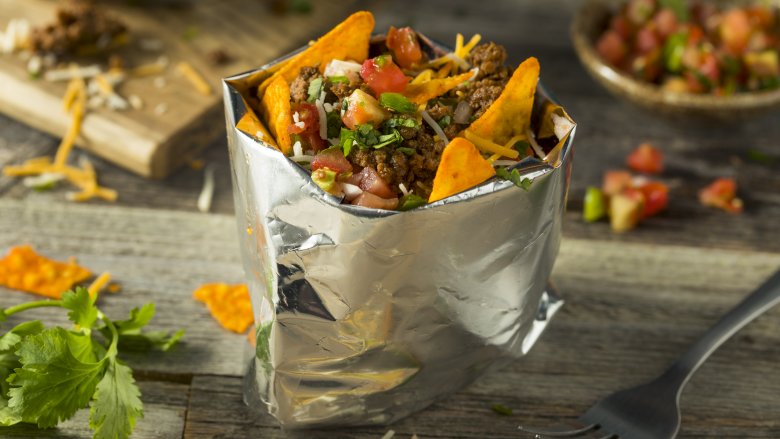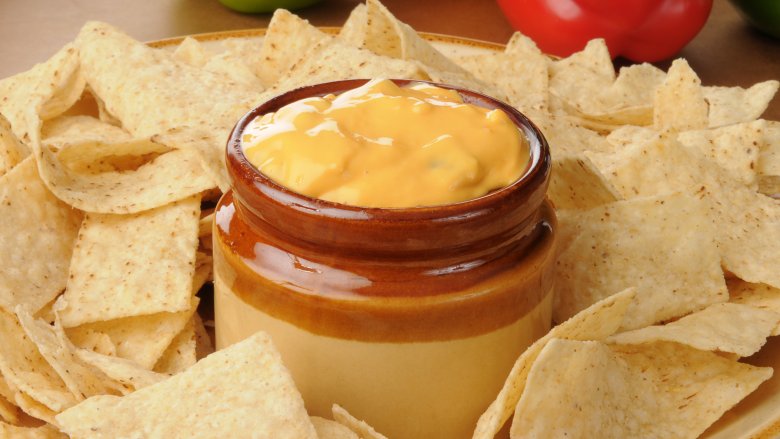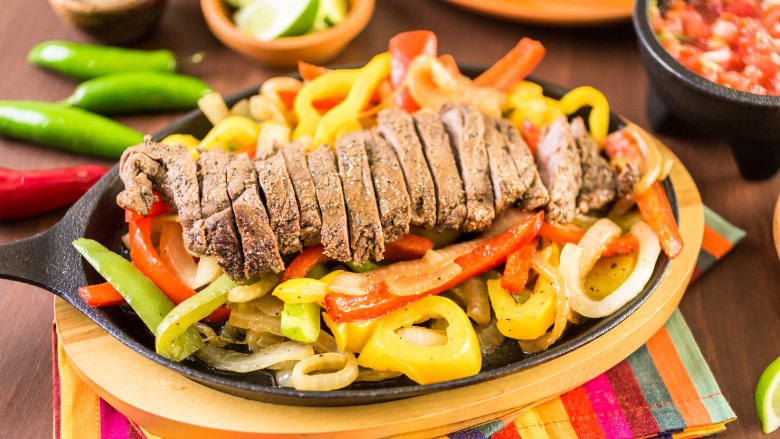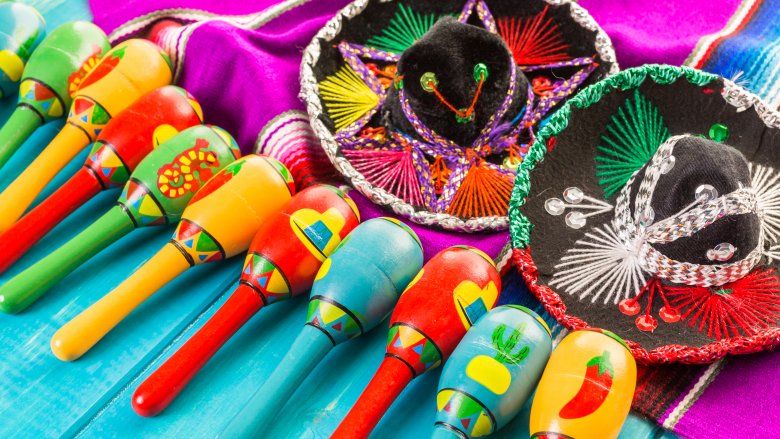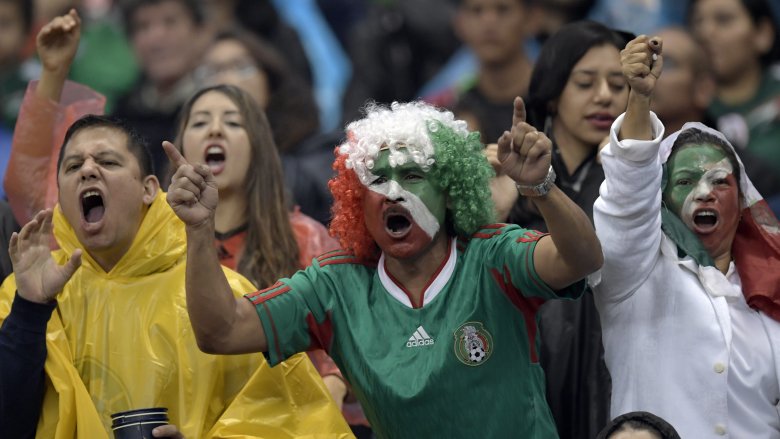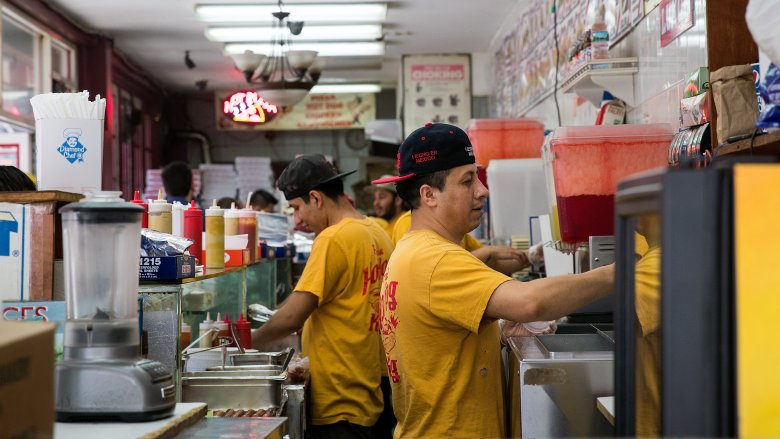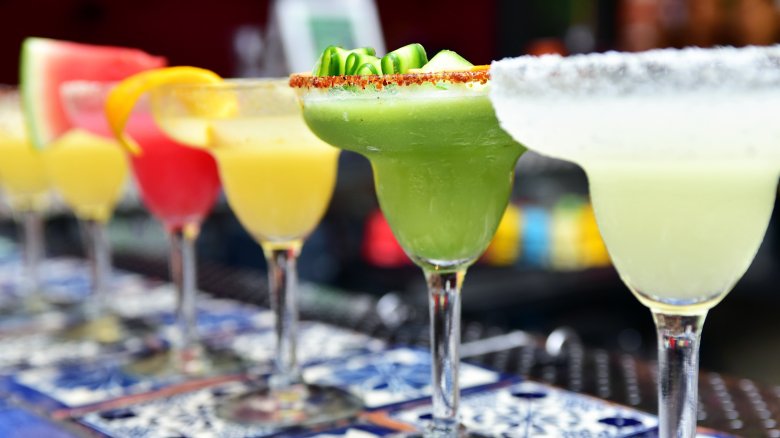How To Spot A Fake Mexican Restaurant
When it comes to authentic cuisine, Mexican food (much like Chinese food) has taken a hit thanks to Americanized versions that have seemingly become the norm in restaurants. Even the restaurants that claim authenticity in the restaurant name itself may not be quite as authentic as you think. So what makes a Mexican restaurant truly authentic? It's about the food, drinks, and so much more. Here's how you can spot a fake Mexican restaurant.
There aren't any corn tortillas
While there are certainly times when a flour tortilla is going to be the best option (we're looking at you, burritos), the preferred tortilla in most authentic Mexican food is the corn tortilla. That's in large part because it came first, all the way back to Mesoamerican civilizations. When the Spanish arrived in the region, they deemed corn "unfit for human consumption." Wheat, on the other hand, represented the body of Christ for Europeans, so it only made sense for them to transform the indigenous corn tortilla into one made from wheat. Keep in mind that corn tortillas don't have to be yellow. They can be blue, red, and even white (sometimes causing them to be mistaken as flour until the first bite). They may be delicious, but flour tortillas are really only popular in northern Mexico along the US border — and they're definitely not authentic.
The corn tortillas aren't gluten-free
If you or someone you know has a gluten intolerance, you probably know that an authentic Mexican restaurant is typically a safe bet. That's because, as mentioned above, corn tortillas are the gold standard. Because authentic Mexican corn tortillas are made only from masa harina and water, they're naturally gluten-free. If an establishment tells you their tortillas aren't gluten-free, it means that wheat flour or some other flour combination was added along the way and they're very likely not made in-house.
There's only one option for salsa and it's very bland
Let's be honest, we all love chips and salsa. While the combo is highly addictive in any form, if the salsa you're getting at a Mexican restaurant is just a bunch of bland tomatoes with the tiniest bit of spice and flavor, you're probably not at an authentic place, especially if there's only one type of salsa available. Authentic Mexican salsa comes in many forms, from the super fresh pico de gallo to spicy salsa verde to the thin, red chiltomate and everything in between. An authentic restaurant will know that different dishes call for different kinds of salsa, not a jar of Tostitos. While we're at it, if you ask for hot sauce and you're given Tabasco sauce instead of Valentina, Cholula, or another authentic hot sauce, that's a red flag.
You don't spot any cilantro
Cilantro is quite possibly the most divisive herb around. Love it or hate it, Mexican food wouldn't be the same without it. Admittedly, cilantro didn't get its origin in Mexico, but ever since the Spaniards brought it to what is now Mexico — where similar herbs were already being cultivated, making it easy for cilantro to thrive — it's been a staple in many Mexican dishes. From enchiladas to tacos (more on those shortly), if you're not seeing that divisive green herb on the plates around you, this isn't real Mexican food.
You can get your taco in non-taco forms
Let's talk tacos. It seems that just about anything can be called a taco these days: lettuce wraps, taco bowls, and "walking tacos" are just a few of the riffs on tacos that you aren't going to see at an authentic Mexican restaurant (sorry, Chipotle). While it's true that tacos can come in many varieties, there are some things that make a taco definitively Mexican. For instance, authentic tacos use corn tortillas, they're soft-shell, and they're topped with cilantro and onion, not a bunch of lettuce, tomato, and cheese. While eating meat, corn chips, and various toppings out of a Fritos bag might sound fun and novel, it's definitely not a taco.
Chips and queso is a menu option
While we're talking about authentic foods turned supremely inauthentic, we have to mention queso dip. Sure, white cheese dip and chips are delicious, and they just might be their own food group in Texas, but the queso dip you find in many Mexican American restaurants isn't authentic. It's quite possible that the chile con queso of today is a descendant of the authentic queso flameado, real queso flameado is served flambé (tequila is a popular choice) and might contain chorizo in addition to chiles. That's a long way from the chips and queso impersonators you'll see at fake Mexican restaurants.
The most popular dish is fajitas
Don't get me wrong, a sizzling plate of fajitas can sometimes really hit the spot, but it just isn't authentic. Fajita literally means "small strip" in Spanish and the word first appeared in non-menu print in a 1971 Tex-Mex cookbook. The dish seems to have originated on Texas ranches in the 1930s where throwaway parts of butchered cattle (including the "skirt") were given to Mexican cowboys as part of their pay. The skirt steak was cooked over campfires, thus giving birth to the term fajita. It wasn't until the late 1960s and early 1970s that fajitas found their way onto menus in the Rio Grande Valley. Tex-Mex at its finest!
They're trying too hard with the decorations
An authentic Mexican restaurant is going to evoke feelings of home for those who are from Mexico. That might mean splashes of traditional folk art, some rustic furniture, and maybe some hand woven baskets. What it probably isn't going to mean is tons of piñatas hanging from the ceiling, posters of bullfighters on the walls, and sombreros everywhere you turn. If you're looking for an authentic experience, think about what makes a place feel authentic to your own everyday culture, rather than the decor that represents festivals or exaggerated stereotypes. With that in mind, if your server is dressed as a matador or in a mariachi costume, that's another sign that you've stepped out of the realm of authentic and into the realm of contrived.
There's anything other than soccer on television
Just like you'd expect to see everyday life reflected in the decor of an authentic Mexican restaurant, you'd also expect to see it reflected in the television choices. Soccer (as we Americans call it) is the most popular sport in Mexico. It's so important that it's considered not only a passion, but a very part of national identity. That said, if you go into a restaurant and see baseball, American football, or golf on the television instead of soccer, you're not in a real Mexican restaurant.
The staff all speaks English to each other
Another thing you might expect from an authentic Mexican restaurants is that people from Mexico work there. As with any work environment, you'd also expect them to speak to each other in the language they all feel most comfortable with. That's why in an authentic Mexican restaurant, you're going to hear lots of Spanish. You'll hear it between servers in the front of the house, you may hear it between cooks in the back of the house, and if it's a super authentic place, you might hear it between customers as well. What you're not going to hear is a lot of English. Similarly, most of the authentic Mexican restaurants I've had the pleasure of visiting were family-owned, which meant that not only was everyone speaking Spanish, there were lots of family members (including kids) hanging around. In an authentic restaurant, you'll be able to sense the importance of family.
There are endless flavors of margaritas
Is there anything better with Mexican food than an ice cold margarita? Probably not, but don't be fooled by all the flavors and combinations of margarita-like drinks in some restaurants. An authentic margarita is just three simple ingredients: tequila, lime/lemon juice, and triple sec. That's it — plain, refreshing goodness, no strawberry, mango, coconut, or whatever other flavor to be found. It's also served on the rocks, not frozen. While other flavors and versions of margaritas are becoming more commonplace in a variety of restaurants, an authentic restaurant will at minimum forgo a margarita mix and make a traditional margarita just like its inventor did in the 1940s.
There's plenty of American soda
Even if you aren't drinking alcohol, there's still an easy way to be tipped off that the restaurant you're at isn't authentic: you can order an American Coke or Pepsi. While you may spot Mexican Coke (made with cane sugar and served in a glass bottle), you'll also spot drinks like aguas frescas, Jarritos soda, Mundet apple soda, and others. I personally recommend Jarritos Mandarin and the Mundet soda, unless of course you can get a really fantastic horchata. Nothing beats a refreshingly cool, from-scratch horchata alongside a spicy carnitas taco (in a corn tortilla, obviously).
